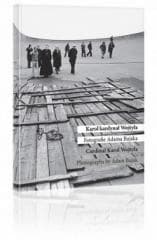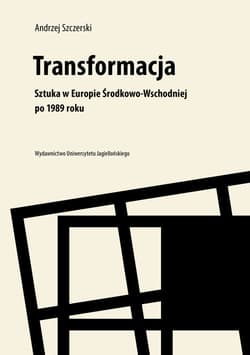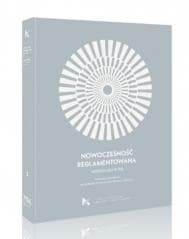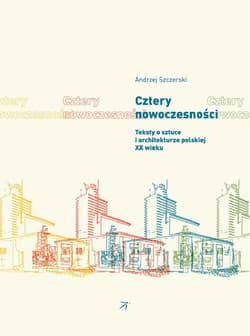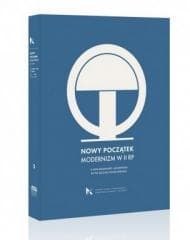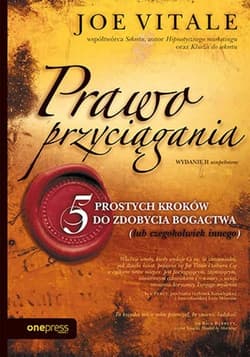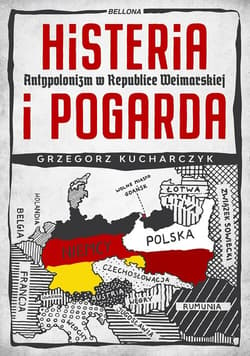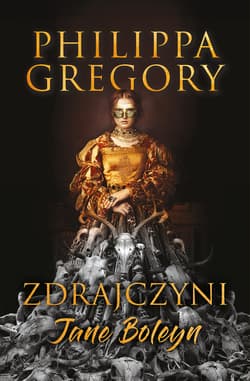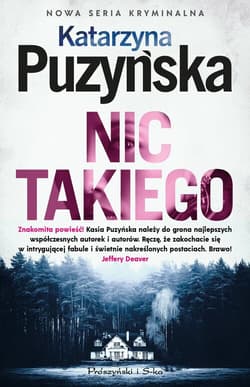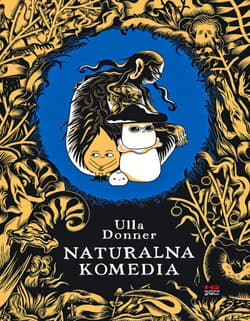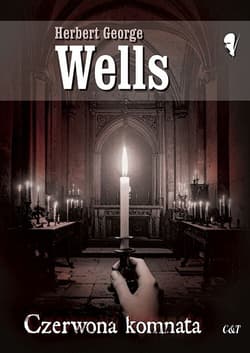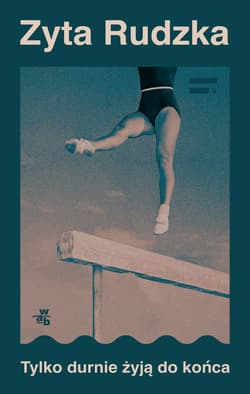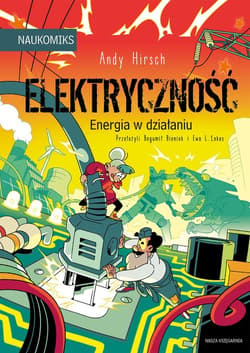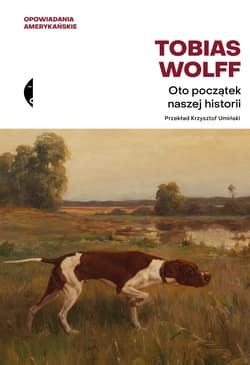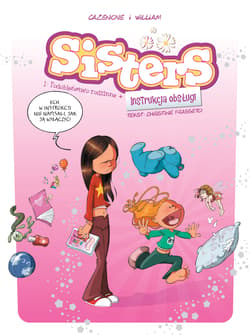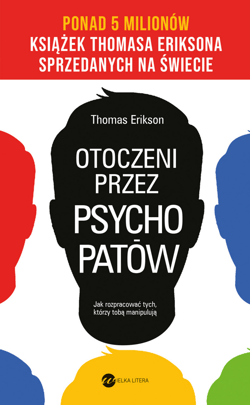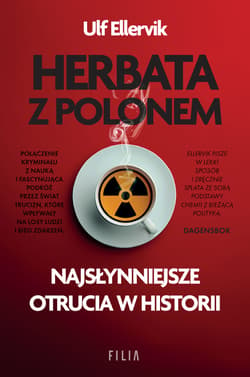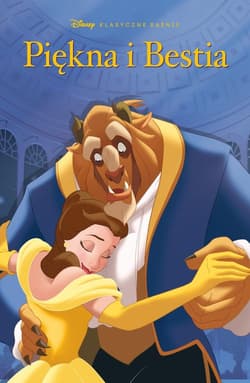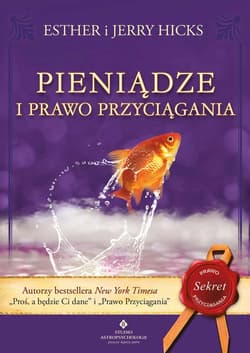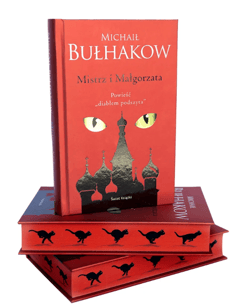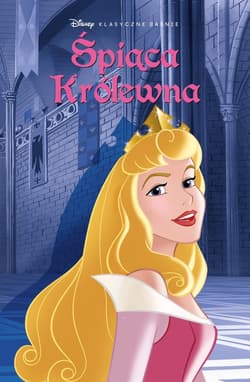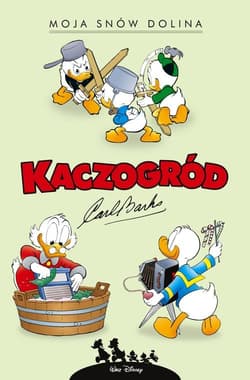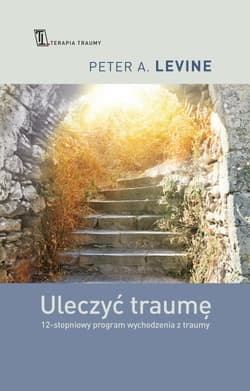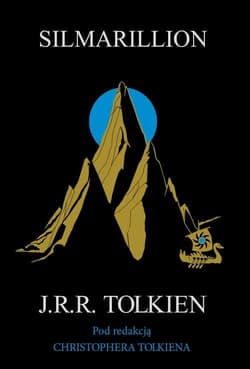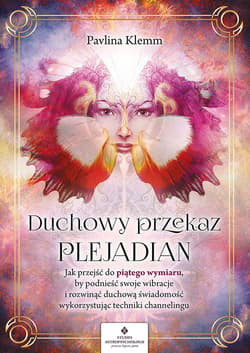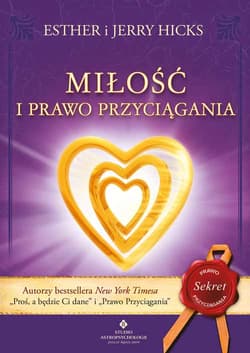Andrzej Szczerski
41,28 zł
Najniższa cena z 30 dni przed obniżką.
46,20 zł
- sugerowana cena detaliczna
Andrzej Szczerski
Książka. Okładka broszurowa ze skrzydełkami
48,99 zł
Najniższa cena z 30 dni przed obniżką.
49,00 zł
- sugerowana cena detaliczna
Magdalena Święch,
Andrzej Szczerski
Książka. Okładka broszurowa (miękka)
38,59 zł
Najniższa cena z 30 dni przed obniżką.
51,45 zł
- sugerowana cena detaliczna
Andrzej Szczerski
Chwilowo niedostępny
Książka. Okładka broszurowa ze skrzydełkami
90,00 zł
Najniższa cena z 30 dni przed obniżką.
120,00 zł
- sugerowana cena detaliczna
red. Piotr Juszkiewicz,
Andrzej Szczerski
Chwilowo niedostępny
Książka. Okładka twarda
Informacje o sortowaniu:
sortowanie wg Popularności:
Produkty są sortowane według popularności na podstawie kilku czynników: liczby zakupów, ilości i wartości wystawionych ocen, zainteresowania użytkowników mierzonych dodaniem produktu do koszyka lub ulubionych.
sortowanie wg Cena - od najniższej:
Produkty są sortowane po aktualnej cenie sprzedaży, od najniższej do najwyższej.
sortowanie wg Cena - od najwyższej:
Produkty są sortowane po aktualnej cenie sprzedaży, od najwyższej do najniższej.
sortowanie wg Od najnowszych:
Produkty są sortowane według daty premiery. Na początku wyświetlane są najnowsze tytuły, które dopiero trafiły do sprzedaży lub będą dostępne w najbliższym czasie
sortowanie wg Od najstarszych:
Produkty są sortowane według daty premiery. Na początku wyświetlane są najstarsze tytuły.
sortowanie wg Popularności:
Produkty są sortowane według popularności na podstawie kilku czynników: liczby zakupów, ilości i wartości wystawionych ocen, zainteresowania użytkowników mierzonych dodaniem produktu do koszyka lub ulubionych.
sortowanie wg Cena - od najniższej:
Produkty są sortowane po aktualnej cenie sprzedaży, od najniższej do najwyższej.
sortowanie wg Cena - od najwyższej:
Produkty są sortowane po aktualnej cenie sprzedaży, od najwyższej do najniższej.
sortowanie wg Od najnowszych:
Produkty są sortowane według daty premiery. Na początku wyświetlane są najnowsze tytuły, które dopiero trafiły do sprzedaży lub będą dostępne w najbliższym czasie
sortowanie wg Od najstarszych:
Produkty są sortowane według daty premiery. Na początku wyświetlane są najstarsze tytuły.
Po użyciu produkty będą automatycznie filtrowane. Wybierz filtry.
44,25 zł
Najniższa cena z 30 dni przed obniżką.
59,00 zł
- sugerowana cena detaliczna
Andrzej Szczerski
7,6 (7)
Chwilowo niedostępny
Książka. Okładka broszurowa ze skrzydełkami
90,00 zł
Najniższa cena z 30 dni przed obniżką.
120,00 zł
- sugerowana cena detaliczna
red. Piotr Juszkiewicz,
Andrzej Szczerski
Chwilowo niedostępny
Książka. Okładka twarda
Bestsellery
38,46 zł
Najniższa cena z 30 dni przed obniżką.
49,90 zł
- sugerowana cena detaliczna
Vitale Joe
Książka. Okładka broszurowa (miękka)
34,95 zł
Najniższa cena z 30 dni przed obniżką.
49,90 zł
- sugerowana cena detaliczna
Grzegorz Kucharczyk
10,0 (2)
Książka. Okładka broszurowa (miękka)
38,99 zł
Najniższa cena z 30 dni przed obniżką.
52,00 zł
- sugerowana cena detaliczna
Ed Yong
7,8 (144)
Książka. Okładka broszurowa ze skrzydełkami
54,39 zł
Najniższa cena z 30 dni przed obniżką.
79,99 zł
- sugerowana cena detaliczna
Zeinab Badawi
7,3 (64)
Książka. Okładka twarda
51,24 zł
Najniższa cena z 30 dni przed obniżką.
68,00 zł
- sugerowana cena detaliczna
Marc Hartzman
8,1 (43)
Książka. Okładka broszurowa ze skrzydełkami
28,44 zł
Najniższa cena z 30 dni przed obniżką.
34,99 zł
- sugerowana cena detaliczna
Joseph Murphy
Książka. Okładka broszurowa (miękka)
34,99 zł
Najniższa cena z 30 dni przed obniżką.
54,99 zł
- sugerowana cena detaliczna
Philippa Gregory
10,0 (2)
Książka. Okładka broszurowa ze skrzydełkami
25,99 zł
Najniższa cena z 30 dni przed obniżką.
39,99 zł
- sugerowana cena detaliczna
null null
Książka. Okładka broszurowa (miękka)
33,54 zł
Najniższa cena z 30 dni przed obniżką.
54,99 zł
- sugerowana cena detaliczna
Katarzyna Puzyńska
7,4 (256)
Książka. Okładka broszurowa ze skrzydełkami
76,37 zł
Najniższa cena z 30 dni przed obniżką.
119,90 zł
- sugerowana cena detaliczna
Mariusz Wołos
8,5 (6)
Książka. Okładka twarda
48,47 zł
Najniższa cena z 30 dni przed obniżką.
79,90 zł
- sugerowana cena detaliczna
Ulla Donner
8,0 (8)
Książka. Okładka broszurowa (miękka)
29,99 zł
Najniższa cena z 30 dni przed obniżką.
49,99 zł
- sugerowana cena detaliczna
Adrian Bednarek
7,9 (114)
Książka. Okładka broszurowa ze skrzydełkami
26,35 zł
Najniższa cena z 30 dni przed obniżką.
29,00 zł
- sugerowana cena detaliczna
Herbert George Wells
Książka. Okładka broszurowa (miękka)
74,32 zł
Najniższa cena z 30 dni przed obniżką.
119,99 zł
- sugerowana cena detaliczna
Janusz Christa
8,3 (4)
Książka. Okładka twarda
30,94 zł
Najniższa cena z 30 dni przed obniżką.
49,99 zł
- sugerowana cena detaliczna
Max Czornyj
7,8 (236)
Książka. Okładka broszurowa (miękka)
40,95 zł
Najniższa cena z 30 dni przed obniżką.
54,99 zł
- sugerowana cena detaliczna
Zyta Rudzka
7,1 (212)
Książka. Okładka twarda
37,39 zł
Najniższa cena z 30 dni przed obniżką.
54,99 zł
- sugerowana cena detaliczna
Beatriz Serrano
7,3 (641)
Książka. Okładka broszurowa ze skrzydełkami
28,89 zł
Najniższa cena z 30 dni przed obniżką.
44,99 zł
- sugerowana cena detaliczna
Andy Hirsch
Książka. Okładka twarda
31,37 zł
Najniższa cena z 30 dni przed obniżką.
36,90 zł
- sugerowana cena detaliczna
Opracowanie Zbiorowe
Książka. Okładka zintegrowana
32,59 zł
Najniższa cena z 30 dni przed obniżką.
49,99 zł
- sugerowana cena detaliczna
Uketsu
7,5 (1288)
Książka. Okładka broszurowa ze skrzydełkami
38,25 zł
Najniższa cena z 30 dni przed obniżką.
66,90 zł
- sugerowana cena detaliczna
Tobias Wolff
Książka. Okładka twarda
28,89 zł
Najniższa cena z 30 dni przed obniżką.
44,99 zł
- sugerowana cena detaliczna
Andy Hirsch
Książka. Okładka twarda
40,94 zł
Najniższa cena z 30 dni przed obniżką.
65,00 zł
- sugerowana cena detaliczna
Julia Cameron
Książka. Okładka broszurowa (miękka)
34,99 zł
Najniższa cena z 30 dni przed obniżką.
56,99 zł
- sugerowana cena detaliczna
Maciej Szaszkiewicz,
Maria Mazurek
Książka. Okładka broszurowa ze skrzydełkami
53,40 zł
Najniższa cena z 30 dni przed obniżką.
89,00 zł
- sugerowana cena detaliczna
Tom Holland
7,3 (22)
Książka. Okładka twarda
28,89 zł
Najniższa cena z 30 dni przed obniżką.
44,99 zł
- sugerowana cena detaliczna
Andy Hirsch
Książka. Okładka twarda
32,99 zł
Najniższa cena z 30 dni przed obniżką.
49,99 zł
- sugerowana cena detaliczna
Opracowanie Zbiorowe
8,7 (3)
Książka. Okładka broszurowa ze skrzydełkami
35,54 zł
Najniższa cena z 30 dni przed obniżką.
49,99 zł
- sugerowana cena detaliczna
Amir Levine,
Rachel Heller
Książka. Okładka broszurowa (miękka)
38,94 zł
Najniższa cena z 30 dni przed obniżką.
49,99 zł
- sugerowana cena detaliczna
Alicja Sinicka
Książka. Okładka broszurowa ze skrzydełkami
37,39 zł
Najniższa cena z 30 dni przed obniżką.
54,99 zł
- sugerowana cena detaliczna
Kelly Rimmer
7,9 (119)
Książka. Okładka broszurowa ze skrzydełkami
36,38 zł
Najniższa cena z 30 dni przed obniżką.
59,90 zł
- sugerowana cena detaliczna
Bonnie Garmus
10,0 (1)
Książka. Okładka broszurowa (miękka)
28,91 zł
Najniższa cena z 30 dni przed obniżką.
40,00 zł
- sugerowana cena detaliczna
Krzysztof Rusak
Książka. Okładka broszurowa (miękka)
29,83 zł
Najniższa cena z 30 dni przed obniżką.
44,99 zł
- sugerowana cena detaliczna
Danielle Collins
Książka
54,00 zł
Najniższa cena z 30 dni przed obniżką.
119,99 zł
- sugerowana cena detaliczna
Jon Peterson,
Kyle Newman,
Michael Witwer
Książka. Okładka twarda
63,62 zł
Najniższa cena z 30 dni przed obniżką.
99,90 zł
- sugerowana cena detaliczna
Andrzej Chwalba
Książka. Okładka twarda
60,59 zł
Najniższa cena z 30 dni przed obniżką.
81,00 zł
- sugerowana cena detaliczna
Simon Winchester
7,4 (11)
Książka. Okładka broszurowa ze skrzydełkami
36,73 zł
Najniższa cena z 30 dni przed obniżką.
59,99 zł
- sugerowana cena detaliczna
Thomas Erikson
Książka. Okładka broszurowa ze skrzydełkami
37,68 zł
Najniższa cena z 30 dni przed obniżką.
49,50 zł
- sugerowana cena detaliczna
Babiański Wojciech,
Chańko Lech,
Czarnowska Joanna
Książka. Okładka broszurowa (miękka)
25,99 zł
Najniższa cena z 30 dni przed obniżką.
34,99 zł
- sugerowana cena detaliczna
Delia Owens
Książka. Okładka broszurowa (miękka)
34,99 zł
Najniższa cena z 30 dni przed obniżką.
59,90 zł
- sugerowana cena detaliczna
Amanda Montell
Książka. Okładka twarda
37,68 zł
Najniższa cena z 30 dni przed obniżką.
64,90 zł
- sugerowana cena detaliczna
Kathleen Hale
Książka. Okładka twarda
29,94 zł
Najniższa cena z 30 dni przed obniżką.
49,90 zł
- sugerowana cena detaliczna
Ulf Ellervik
7,2 (360)
Książka. Okładka broszurowa (miękka)
22,93 zł
Najniższa cena z 30 dni przed obniżką.
29,95 zł
- sugerowana cena detaliczna
Jolanta Szewczyk
Książka. Okładka broszurowa (miękka)
42,99 zł
Najniższa cena z 30 dni przed obniżką.
59,99 zł
- sugerowana cena detaliczna
Thomas Erikson
6,0 (17)
Książka. Okładka broszurowa ze skrzydełkami
26,67 zł
Najniższa cena z 30 dni przed obniżką.
34,99 zł
- sugerowana cena detaliczna
Colleen Doran
8,0 (8)
Książka. Okładka broszurowa (miękka)
42,78 zł
Najniższa cena z 30 dni przed obniżką.
59,50 zł
- sugerowana cena detaliczna
Hicks Esther i Jerry
Książka. Okładka broszurowa (miękka)
30,89 zł
Najniższa cena z 30 dni przed obniżką.
49,90 zł
- sugerowana cena detaliczna
Johnson Ben
Książka. Okładka broszurowa (miękka)
39,78 zł
Najniższa cena z 30 dni przed obniżką.
59,99 zł
- sugerowana cena detaliczna
Peter A. Levine
Książka. Okładka broszurowa ze skrzydełkami
55,99 zł
Najniższa cena z 30 dni przed obniżką.
79,91 zł
- sugerowana cena detaliczna
Michaił Bułhakow
Książka. Okładka twarda
75,60 zł
Najniższa cena z 30 dni przed obniżką.
126,00 zł
- sugerowana cena detaliczna
Daniel Odija,
Stefaniec Wojciech
7,8 (27)
Książka. Okładka twarda
23,57 zł
Najniższa cena z 30 dni przed obniżką.
29,99 zł
- sugerowana cena detaliczna
null
Książka. Okładka broszurowa (miękka)
66,88 zł
Najniższa cena z 30 dni przed obniżką.
89,99 zł
- sugerowana cena detaliczna
null
Książka. Okładka twarda
29,83 zł
Najniższa cena z 30 dni przed obniżką.
44,99 zł
- sugerowana cena detaliczna
Peter A. Levine
5,0 (1)
Książka. Okładka broszurowa (miękka)
40,94 zł
Najniższa cena z 30 dni przed obniżką.
59,90 zł
- sugerowana cena detaliczna
J.R.R. Tolkien
8,1 (25051)
Książka. Okładka broszurowa (miękka)
33,69 zł
Najniższa cena z 30 dni przed obniżką.
44,90 zł
- sugerowana cena detaliczna
Delia Owens
7,9 (50704)
Książka. Okładka broszurowa ze skrzydełkami
32,94 zł
Najniższa cena z 30 dni przed obniżką.
54,90 zł
- sugerowana cena detaliczna
Szymon Pilarz
Książka. Okładka broszurowa ze skrzydełkami
28,49 zł
Najniższa cena z 30 dni przed obniżką.
44,40 zł
- sugerowana cena detaliczna
Pavlina Klemm
Książka. Okładka broszurowa (miękka)
27,99 zł
Najniższa cena z 30 dni przed obniżką.
30,90 zł
- sugerowana cena detaliczna
Janowicz Jerzy
Książka. Okładka broszurowa (miękka)
25,71 zł
Najniższa cena z 30 dni przed obniżką.
39,90 zł
- sugerowana cena detaliczna
Ewa Stusińska
6,6 (751)
Książka. Okładka twarda
32,99 zł
Najniższa cena z 30 dni przed obniżką.
44,40 zł
- sugerowana cena detaliczna
Hicks Jerry,
Hicks Esther
Książka. Okładka broszurowa ze skrzydełkami


